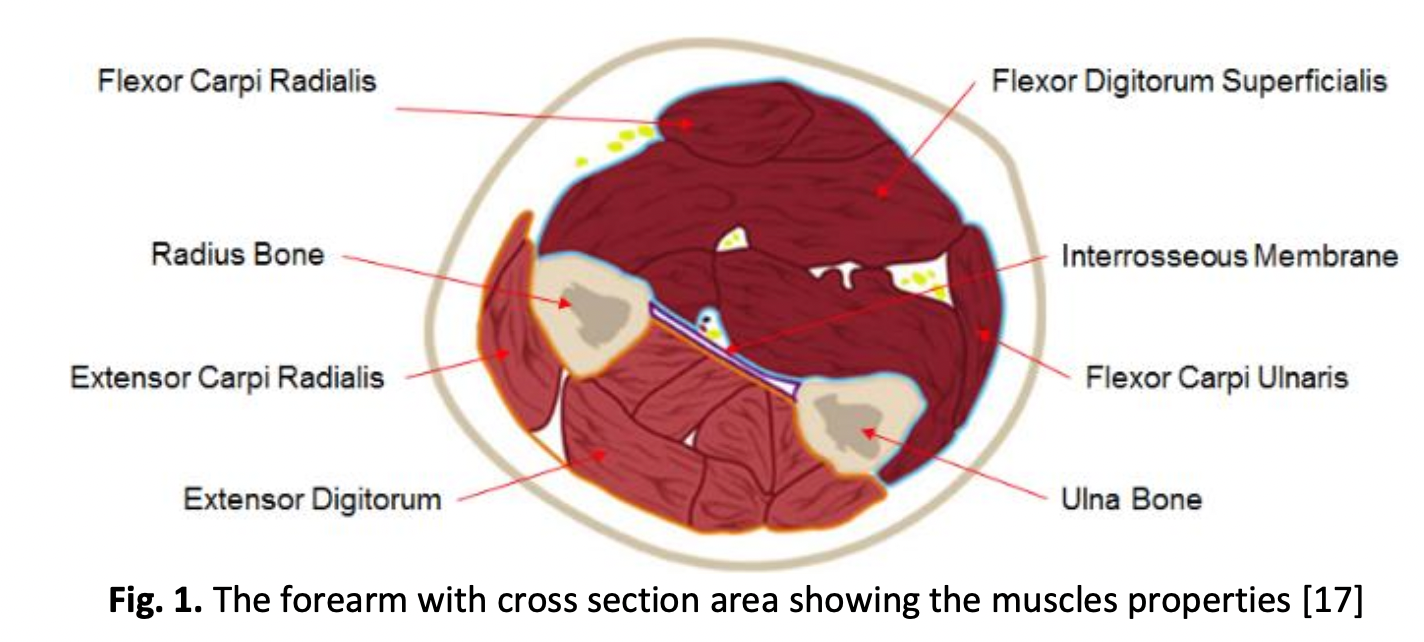Electromyography Indices of Handgrip Force with Swinging Motion
DOI:
https://doi.org/10.37934/araset.31.3.126136Keywords:
Electromyography EMG, maximum voluntary contraction MCV, muscle indices, EMG Indices Handgrip ForceAbstract
Electromyography (EMG) is a powerful tool for studying muscle activity, but there is limited research on EMG signals in the muscles of the human forearm, which poses challenges for prosthetic hand development. This study utilized the maximum voluntary contraction (MVC) normalization method to analyze the flexor carpi radialis muscle during handgrip and swinging motions. The MVC indices revealed a significant proportion of high-amplitude MVC results. We conducted three statistical analyses to validate the indices. One-way ANOVA showed significant differences in mean values among the seven subjects during the percent MVC test. RMS study demonstrated a linear correlation between muscle contraction and movement. Boxplot analysis revealed variations within the interquartile range and median values across the entire MVC range. To achieve these results, we employed an eighth-order Gaussian function for curve fitting and exponential weighted moving average. The median interquartile range showed high discrepancies, while the differences between MVC increments were minimal, providing reliable indices for swinging motion. This suggests that the fat layer thickness may influence the muscle signal's frequency characteristics. In summary, our study highlights the untapped potential of EMG signals in the forearm muscles for prosthetic hand development. By employing MVC normalization and conducting rigorous statistical analyses, we uncovered significant findings that contribute to advancements in this field. Our insights provide hope and inspiration for researchers and practitioners seeking to enhance prosthetic technology.
Downloads




























